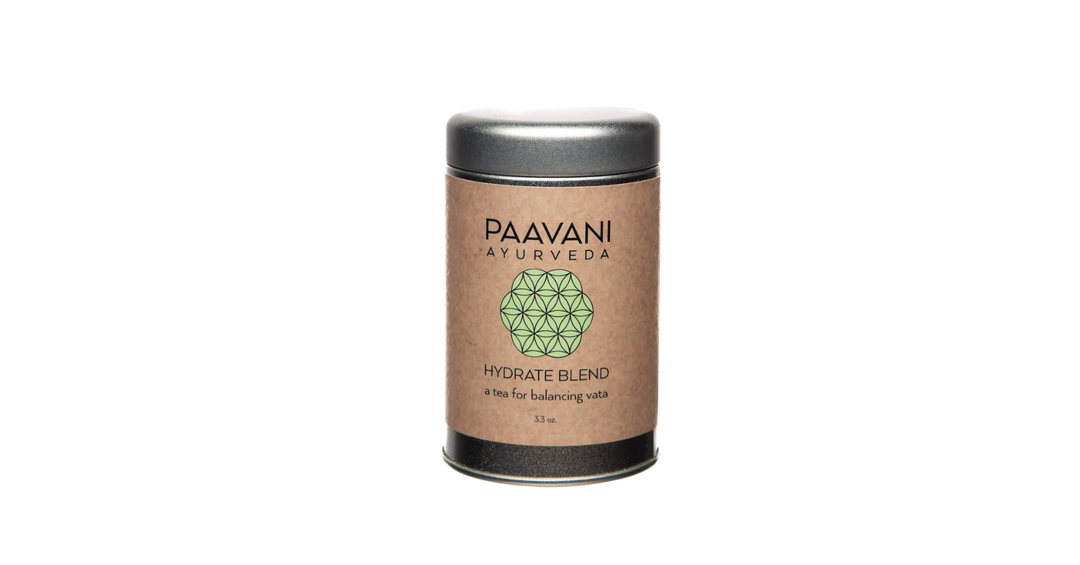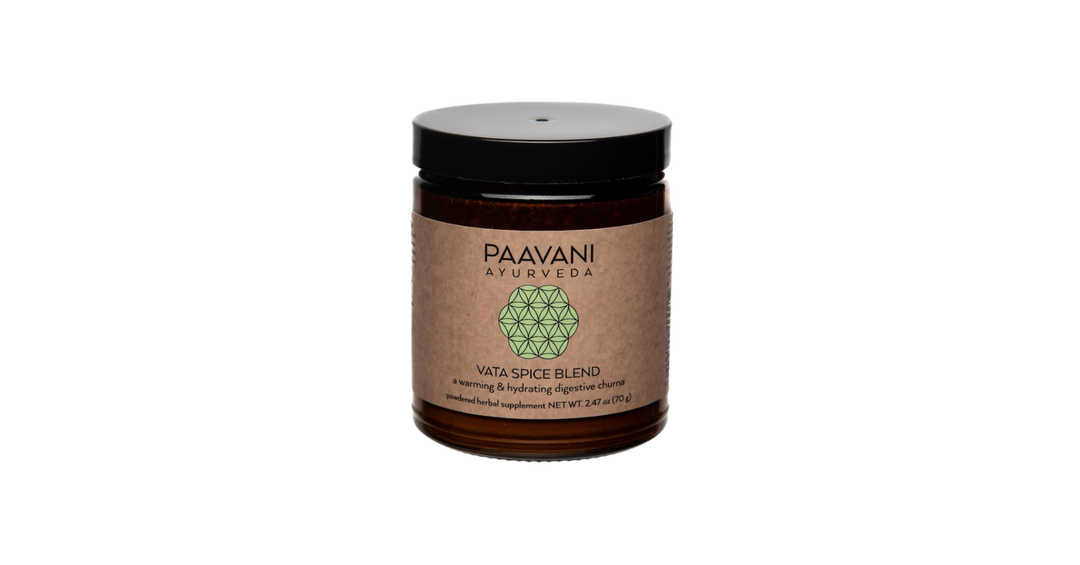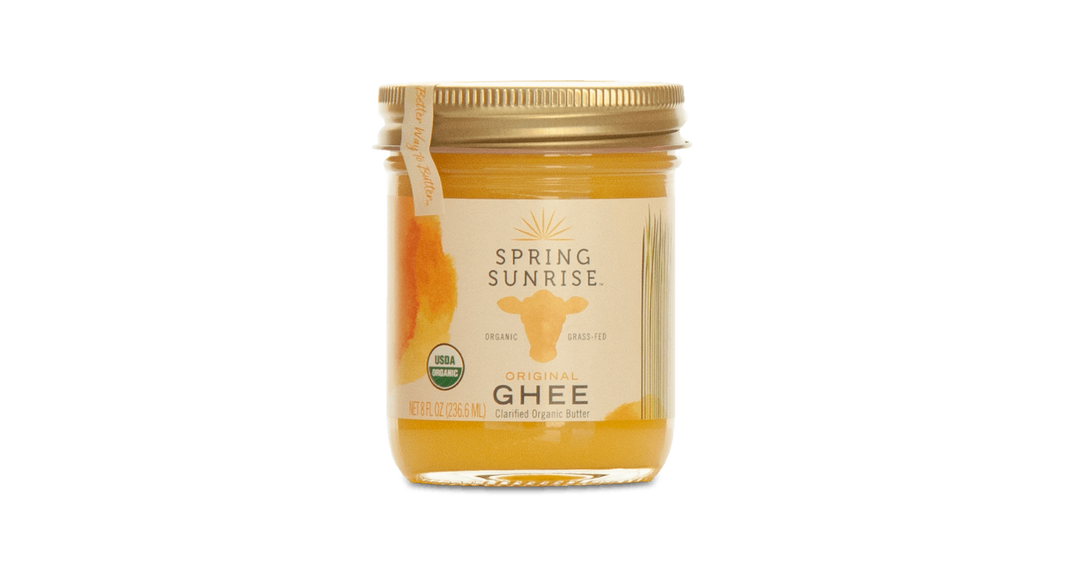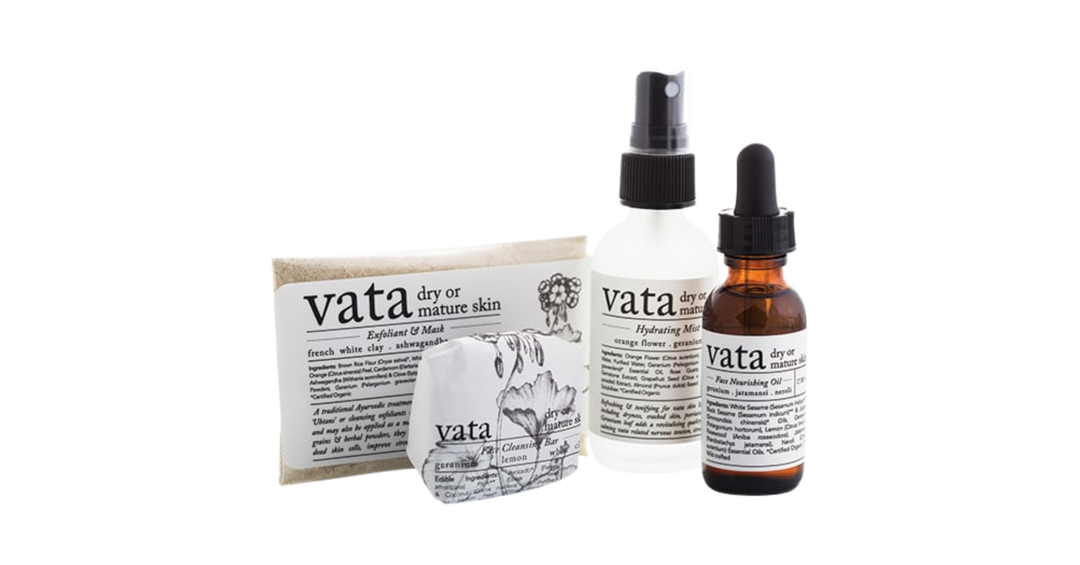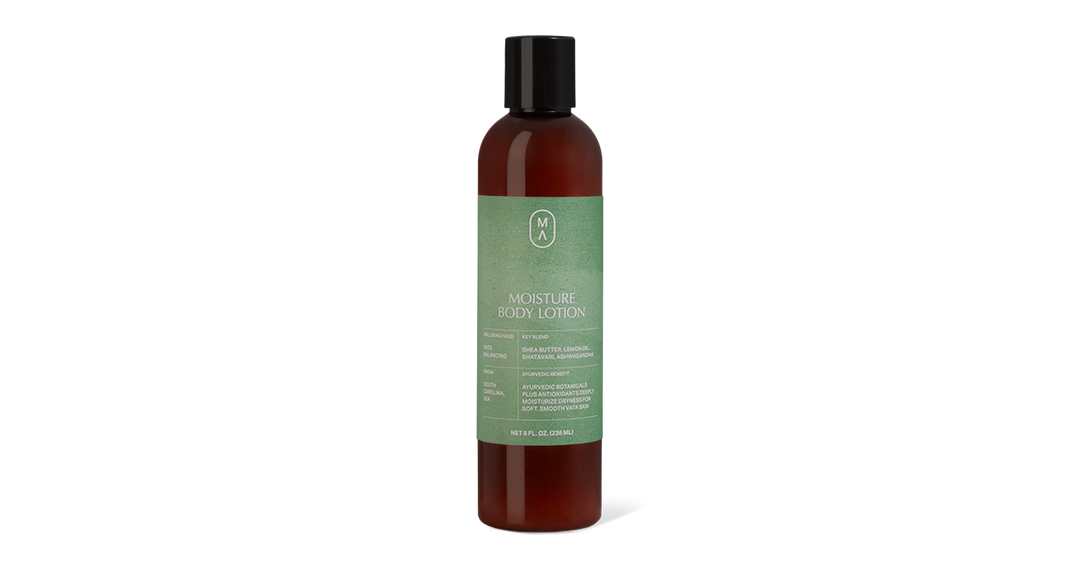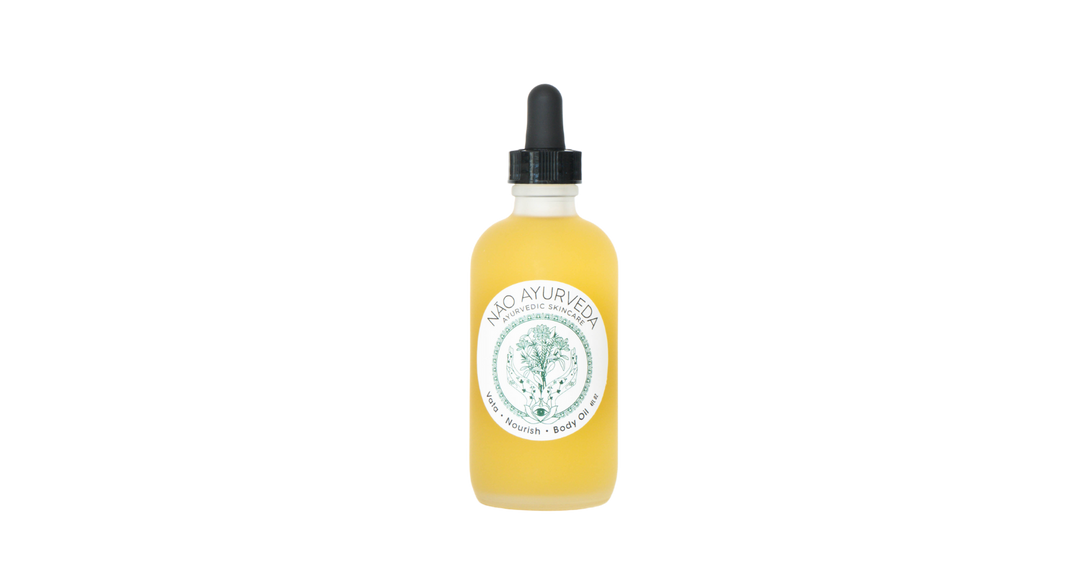Understanding Vata Dosha
Vata dosha characteristics, diet, balancing, and recipes.
Are your hands and feet always cold? Do you have a hard time gaining weight? Do you often feel scattered and “spaced out,” or suffer from occasional sleeplessness and constipation? If you answered yes to one or more of these questions, you might have a Vata dosha imbalance—or you might be a Vata dosha type.
What’s a Dosha?
According to Ayurveda, the five natural elements (ether, air, fire, water, and earth) are present in your mind and body, too—in form of the doshas: Vata (ether, air), Pitta (fire, water), and Kapha (water, earth). These elemental energies influence everything from your physical shape and digestion to the way you process thoughts and emotions. Take our Dosha quiz to find out mind-body type.
Everyone has all three doshas present in their mind and body, but most of us tend to have one or two doshas predominating.
What is Vata Dosha?
Vata dosha is the Ayurvedic mind-body element associated with air and space. It’s light, cool, and dry in nature, and it governs all movement and processes in your mind and body—including processes like blood flow, elimination, breathing, and the movement of thoughts in your mind.
Vata Dosha Characteristics / Mind-Body Constitution
If you have a predominantly Vata constitution, the qualities of Vata dosha (light, cool, dry, quick) will be noticeably expressed in your mind and body. Your body is probably naturally thin and slender. Your hands and feet may tend to get cold easily, and your skin is cool and dry to the touch (especially in your extremities). Your sleep may sometimes be a bit elusive, or easily disturbed.
Intellectually, you have an agile mind that moves quickly—though you may be prone to forget things just as easily as you learn them! Your emotions are likely fluid as well. People with strong Vata tendencies are creative, dynamic, whirlwind types who often find themselves rushed or in a hurry.
These are some of the basic Vata dosha characteristics (remember, we all have some measure of Vata in our minds and bodies). Now, let’s move on to some of the things you’ll notice in your mind and body when Vata dosha is in balance, and when it’s out of balance:
| Vata in Balance | Vata Out of Balance |
|---|---|
| • energetic and vivacious | • tired and/or fatigued |
| • learns easily | • lack of focus or forgetful |
| • clear and alert mind | • spaced out or scattered |
| • falls asleep easily at bedtime | • difficulty falling asleep |
| • balanced digestion and elimination | • occasional constipation, gas, wind |
| • good circulation and even body temperature | • can feel cold physically |
| • poor circulation - cold hands and feet | |
| • feelings of anxiousness or worry |
How to Balance Vata Dosha—Easy Lifestyle Tips
One of the foundational principles of Ayurveda is that “like increases like,” and opposites balance. Therefore, because Vata dosha is cool, light, and dry, it benefits from things that are warming, grounding, and nurturing. One of the best things you can do to counter Vata’s light, somewhat erratic nature is to follow a regular routine that includes warm, nourishing foods and plenty of rest.
Here are some other easy things you can do to remedy a Vata imbalance:
- Follow a Vata dosha-balancing diet, favoring warm, oily, heavy, well-spiced foods with sweet, sour, and salty tastes, and avoiding those that are cold, dry, and raw. See full Vata Dosha Diet Guidelines below.
- Try not to skip meals. Instead, eat three warm, cooked meals per day at about the same time each day.
- Drink Vata Tea—a naturally sweet, warming, and comforting herbal tea designed to create calm in both mind and body. All-organic Ayurvedic spices support digestive health.
- Avoid stimulants like caffeine, alcohol, or staying up late watching TV and looking at electronic devices
- Give yourself a soothing daily abhyanga (self-massage with warm oil) to help improve circulation, calm the nerves, and alleviate dry skin.
- Avoid work that is stressful—especially in the evening hours—and make time for relaxing exercise, like walks and yoga.
- Do gentle breathing exercises like pranayama each day.
- Bundle up in cool or cold, windy weather. Keep your extremities well protected and warm.
- Reduce mental stress with meditation. The Transcendental Meditation® program, for instance, has been proven in hundreds of scientific studies to be a very effective technique for dissolving mental, emotional, and physical stress.
- Go to bed early at night, well before ten o'clock, and rise before 6:00 a.m.
- Ensure you have some downtime every day.
Vata Dosha Diet Guidelines & Recipes
In Ayurveda, food is medicine. A Vata-balancing diet will go a long way toward providing the warmth, grounding, and nourishment that Vata needs to stay balanced. Aim to eat three meals at the same times each day: morning, noon, and evening—and try not to skip meals (which can disrupt Vata’s delicate digestive fire). It’s also better to avoid overeating and undereating. Ideally, you’ll feel hungry by the next meal, but not ravenous.
It’s okay to snack a bit between meals, so long as it doesn’t dampen the feeling of hunger by your next meal. Try to eat in a quiet, relaxing environment to avoid overstimulation. Last, but definitely not least, whenever possible favor organically grown foods and avoid genetically modified foods (GMOs).
Vata Diet
|
|
Favor |
Reduce or Avoid |
|
Summary |
Warm, heavy, unctuous, and oily foods, warm food and drinks. Favor sweet, sour, and salty tastes. |
Light and dry food; avoid cold food and drinks; minimize pungent, bitter, and astringent tastes. |
|
Grains |
Wheat products, rice (basmati, jasmine, and heavy sweet rice are all good), cooked oat flakes. |
Barley, corn, millet, rye, buckwheat, and raw oats (all harder to digest for delicate Vatas). |
|
Pulses |
Soup of mung beans, split whole mung beans, red lentils, yellow mung dhal (pulses can be soaked overnight for faster cooking). |
Pulses, with the exception of the easy-to-digest ones listed to the left. |
|
Dairy |
All dairy products. Cheese should be soft and fresh (paneer, cottage cheese, fresh mozzarella, and cream cheese are all examples of easy-to-digest, lightly-aged cheeses). |
|
|
Sweeteners |
All sugar cane products such as unprocessed white rock sugar/natural candy sugar, raw cane sugar, molasses, maple syrup, and raw unheated honey. |
Heated pasteurized honey. Foods with honey cooked in them. |
|
Oils |
All (organic ghee is especially recommended for cooking). |
|
|
Nuts & Seeds |
All nuts except peanuts; seeds in small amounts. |
Peanuts |
|
Spices and Condiments |
Cumin, ginger, mustard seeds, fenugreek, asafoetida, cinnamon, cardamom, cloves, anise, fennel, black pepper (small amounts), salt, lemon juice, tamarind (Asian fruit); Vata Churna and Vata Tea (ready-made mixtures of spices and herbs that balance Vata). |
|
|
Vegetables |
Asparagus, beets, cabbage (cooked), cucumber, fennel, garlic, green beans, green chilies, leeks, okra, olives, black, parsnip, peas (cooked), potatoes, sweet, pumpkin, radishes (cooked), rutabaga, spaghetti squash, spinach, zucchini |
Artichoke, bitter melon, broccoli, brussels sprouts, burdock root, cabbage (raw), cauliflower (raw), celery, corn, eggplant, kale, olives, green, onions (raw), peppers, sweet & hot, potatoes, white, radish (raw) |
|
Fruits |
Ripe, sweet, and juicy fruits: apricots, avocado, bananas, berries, cherries, dates (fresh), figs (fresh), grapefruit, grapes, kiwi, lemons, limes, mangoes, melon, oranges, papaya, peaches, pineapple, plums, prunes (soaked), raisins (soaked), rhubarb, strawberries |
Unripe, dry, sour fruits: apples (raw), dates (dry), figs (dry),pears, pomegranate, raisins (dry), prunes (dry), watermelon |
Vata Dosha Recipes
Here are a few of our favorite Vata-balancing recipes! As you now understand, it’s helpful to eat warming, grounding, well-spiced foods to counter Vata’s cool, drying influence. Explore our full collection of Vata dosha recipes below:
NOTE: Guidelines provided in this table are general. Specific adjustments for individual requirements may need to be made, e.g., food allergies, strength of agni, season of the year, and degree of dosha predominance or aggravation. Before making any changes to your diet, it is recommended that you check with your physician. This Ayurvedic dietary guide is educational and is not intended to treat, cure, mitigate, or prevent any disease.
Disclaimer: The sole purpose of these articles is to provide information about the tradition of Ayurveda. This information is not intended for use in the diagnosis, treatment, cure, or prevention of any disease. If you have any serious acute or chronic health concern, please consult a trained health professional who can fully assess your needs and address them effectively. If you are seeking the medical advice of a trained Ayurvedic expert, call or email us for the number of a physician in your area. Check with your doctor before taking herbs or using essential oils when pregnant or nursing.
Take our Dosha Quiz to discover your unique mind-body type.
Find your center with these warming, grounding Vata-balancing essentials. Explore calming massage oils, supplements, teas, spices, aromatherapy and more.


